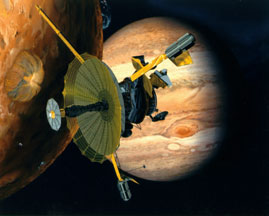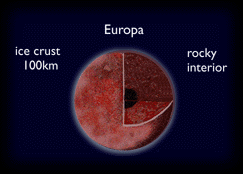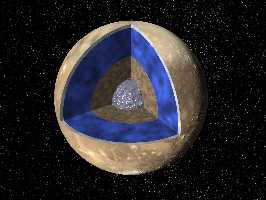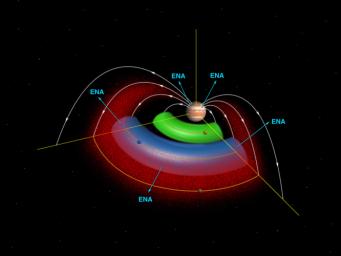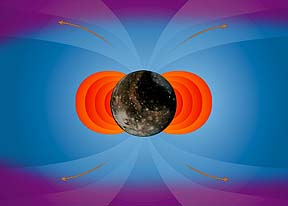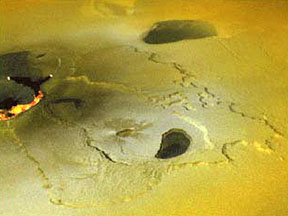Click on image for full size
Image courtesy NASA/JPL.
Related links:
Galileo Reaches the End of its Road
News story originally written on September 19, 2003
Galileo is a spacecraft that has been orbiting Jupiter for eight years. On September 21, 2003, Galileo will crash into Jupiter. It will burn up in Jupiter's atmosphere. The crash is not an accident! The people who run the Galileo mission are making Galileo crash on purpose!
Why are they doing that? They want to make sure Galileo doesn't crash somewhere else. One of Jupiter's moons, Europa, might have life on it. There are probably microbes inside of Galileo somewhere. If Galileo crashed on Europa, the microbes might get out and start growing there. Scientists don't want that to happen!
The team of scientists and engineers who worked on the Galileo mission are sad to see it end. However, they are proud of all the great things Galileo has done. Here are some of the things Galileo has helped us learn:
- There may be an ocean under the icy surface of the moon Europa.
- The moons Europa, Io, and Ganymede all have cores with metal in them. Callisto does not; it is a big ball of ice.
- Europa, Ganymede, and Callisto all seem to have thin atmospheres.
- Ganymede has a magnetic field.
- Io has many, many volcanoes. It may be a lot like Earth was when Earth was young. Maybe we can learn about Earth's early history by studying Io.
- Jupiter's ring system is formed by dust kicked up by meteoroids that smash into the planet's four small inner moons. The outermost ring is actually two rings, one inside of the other.


